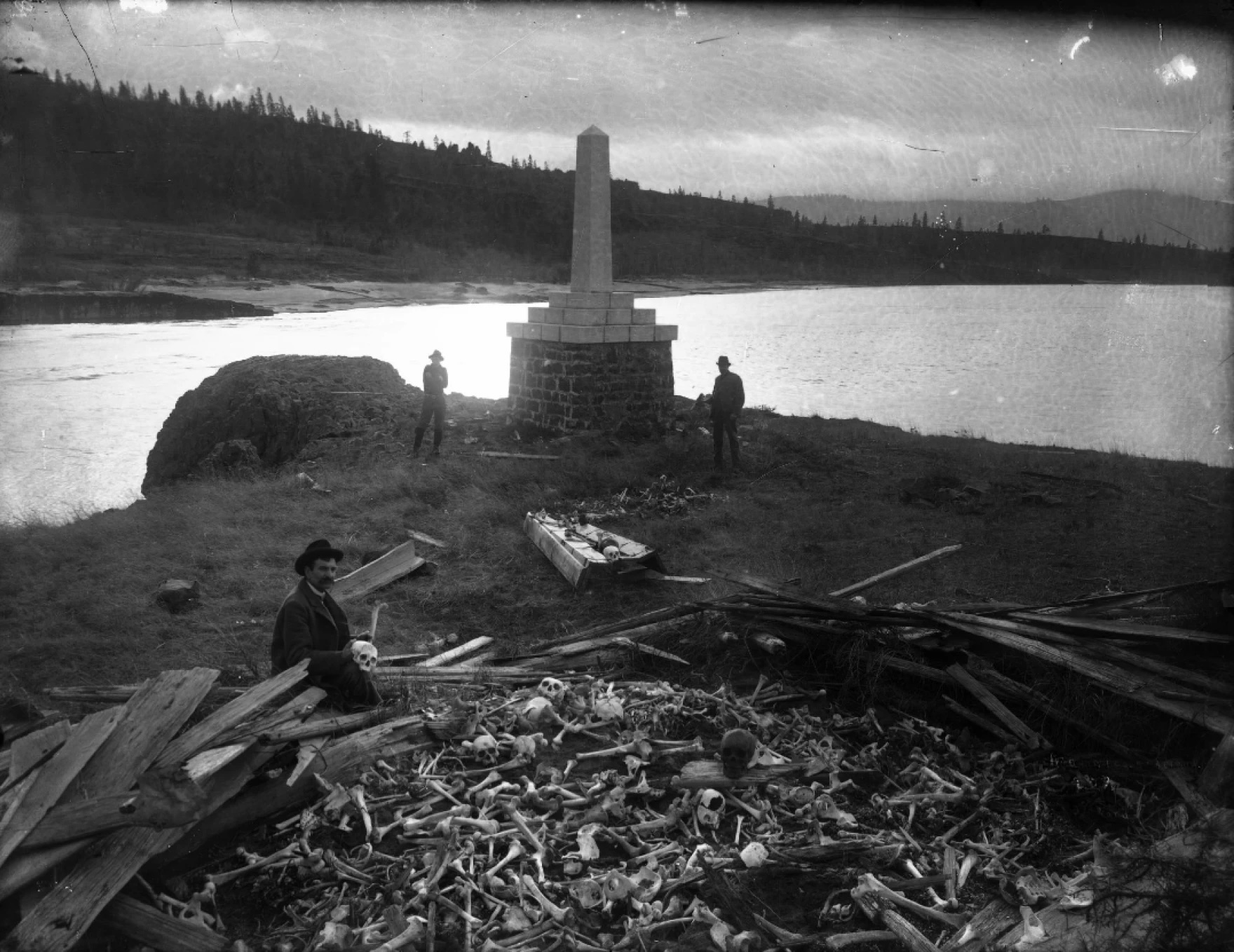
By BRIAN BULL/KLCC News
CORVALLIS — The proper repatriation of Native American remains is behind a new facility and the collaboration between Oregon State University and the nine federally-recognized tribes within the state.
Called the “OSU-NAGPRA Facility,” the two buildings comprise about 2,000 square feet total. They’re for consultation, records, administrative offices, and storing human remains in accordance with the Native American Graves Protection and Repatriation Act. The 1990 federal law mandates the safe return of skeletons, bones, and cultural items to their tribes.
Partners say this new facility follows a roughly two-year timeline. While the COVID-19 pandemic did its share of disruption, establishing trust between tribes and state agencies was also a process given more than a century of pillaged Native burial sites and contents ending up in museum displays and classrooms.
Ashley Russell is director of Natural Resources and Culture for the Confederated Tribes of Coos, Lower Umpqua, and Siuslaw Indians. During an online press conference last week, Russell credited serious and sensitive discussions among tribes, OSU, and the state in making the facility possible.
“It’s just very important to us as tribes to have that relationship, and it not be like a transactional thing because these are ancestors,” she said. “They’ve made their journey, they’re on the other side, and you have to be careful when you navigate those sorts of things.”
Other tribal representatives across Oregon have voiced support for the facility, which may be the first built specifically for repatriation purposes.
“My mom and I used to walk the Dunes,” said Doug Barrett, CTCLUSI chief. “One day we went, and it was all dug up. Piles were left everywhere.”
Barrett and other Native people across Oregon say cultural sites and old encampments were frequently ransacked for items. While locals hunting arrowheads were problematic enough, many culturally significant artifacts and bones often ended up in regional colleges, universities, and museums.
The development of the OSU-NAGPRA Facility follows intensive planning between the tribes and state government and education officials.
“It was a powerful experience for me to be with all those other folks and do the right thing we needed to do for the ancestors,” said Barrett. “It’s just going to be a snowball effect, hopefully other universities will see what’s being done here.”
Oregon’s NAGPRA Director, Dawn Marie Alapisco, was pleased with the support.
“This isn’t an ending at all, this is a new beginning,” she said. “This is a change, a shift in how NAGPRA can and should be performed.”
NAGPRA compliance has been a constant sore spot between many tribes and institutions. Some universities have retained bones and remains in years past, citing “research” needs. Critics have attacked this rationale, noting some of the research has been used in the past to justify discredited racial hierarchies. And others lament the pace that institutions have taken, which has been slow and weighed down by bureaucracy or lack of funds.
Yet other critics cite the availability of plastic bones and skeletons for research, saying this eliminates the need for the real thing pillaged from burial sites and battlefields. Some researchers continued using remains despite outcry, saying their vague history didn’t make it absolutely clear if they were of Native/Indigenous origin.
During Thursday’s call, Alapisco added that she was involved extensively in the OSU-NAGRPA facility’s design, which is climate-controlled and has features like a porch area with cedar bark. The space can be used for smudging and other Native American rituals to promote healing and connectedness with the ancestors. It’s also ADA compliant, to accommodate elders.
No specific details were shared during the conference call regarding the number of remains or how long they will be stored, save that they’ll be kept in the facility until they’re formally repatriated.
“That will take years,” said Alapisco.




















